 |
 |
 |
| |
High Death and Hospital Rates in US Group With HIV and Cirrhosis
|
| |
| |
IDWeek 2023, October 11-15, 2023, Boston
Mark Mascolini
Death and hospital admission rates proved higher in a University of North Carolina (UNC) group with HIV infection and cirrhosis than in the larger group with HIV but without cirrhosis [1]. Only 3 of these 115 people with HIV and cirrhosis got referred for liver transplant.
Although cirrhosis prevalence is rising in people with HIV because of comorbidities like viral hepatitis, nonalcoholic fatty liver disease (NAFLD), and alcohol-associated liver disease (ALD), clinical attributes and outcomes of cirrhosis in HIV populations remain poorly understood, noted UNC researchers who conducted the new study.
They designed a retrospective analysis of adults with HIV and cirrhosis in care at UNC from 2014 through 2022. Assessing data in the UNC Center for AIDS Research HIV Clinical Cohort (UCHCC), the researchers defined cirrhosis through ICD codes confirmed by physician chart review. They excluded people who had a liver transplant or hepatocellular carcinoma (HCC) before the study period began. Cohort members began contributing person-time to the analysis when entering care, at their first HIV clinic visit during the study period, or when diagnosed with cirrhosis, whichever came last. Follow-up of each individual ended on December 31, 2022, when they went 18 months without an HIV load assay or CD4 count, or when they died.
Ninety of 115 study cohort members (78.3%) were men, 53% non-Hispanic black, 39.1% non-Hispanic white, 4.4% Hispanic, and the rest American Indian/Alaska Native or Asian/Pacific Islander. Median age at cohort entry stood at 54 years (interquartile range 47 to 59).
The largest portion of the group, 38.3%, relied on Medicare for health insurance, 15.7% used Medicaid, 24.3% had commercial insurance, and 21.7% were uninsured or had data missing. Similar proportions of the study cohort acquired HIV during sex between men (33%) or when injecting drugs (32.2%), while 5.2% risked acquiring HIV by either of those two routes, 20% through heterosexual sex, and 8.7% during blood transfusion. High proportions of this group had an undetectable viral load when entering the study cohort (91.3%) and a CD4 count at or above 200 (85.2%). Most cirrhosis cases could be attributed to hepatitis C (61.7%), followed by hepatitis B (29.6%), alcohol use disorder (24.4%), or other or unspecified reasons (9.6%).
Sixty-six people (57.4% of 115) with cirrhosis had at least one hospital admission during the study period (not counting admission and discharge on the same day) to yield an unadjusted admission rate of 26.4 per 100 person-years. In contrast, the overall UCHCC group had an unadjusted admission incidence of 15.0 per 100 person-years.
Thirteen people with cirrhosis (11.3%) got diagnosed with HCC during study time for an unadjusted incidence of 1.8 per 100 person-years. And 27 people (23.5%) with cirrhosis died during the study for an unadjusted incidence of 4.0 per 100 person-years, compared with a death rate of 1.3 per 100 person-years in the overall UCHCC group.
The UNC investigators counted 69 people with a new cirrhosis diagnosis during the study period. Their demographics mostly paralleled those of the full 115-person study group, except the contingent with incident cirrhosis could slightly more often attribute their HIV infection to injection drug use. In the 69 people with incident cirrhosis, cumulative incidence of the first decompensation event stood at 31.9% 1 year after cirrhosis diagnosis, 37.9% 3 years after diagnosis, and 48.0% 8 years after diagnosis. In this 69-person subgroup, cumulative incidence of death came to 5.8% 1 year since cirrhosis diagnosis, 7.8% 3 years after diagnosis, and 22.0% 8 years after diagnosis.
In the full 115-person study cohort, only 1 person had a liver transplant referral before the study period and only 2 during the study period.
The researchers observed that use of Medicare by 38% of this mostly working-age population (
median age 54 years) suggests that a significant proportion had a disability. (Medicare is federal health insurance for people 65 or older, certain younger people with disabilities, and people with end-stage renal disease.) They suggested two main conclusions from their analysis: Death and hospital admission rates ran substantially higher in this HIV group with cirrhosis than in the same HIV cohort without cirrhosis. Liver transplantation-or even referral for liver transplantation-was rare in these people with cirrhosis and HIV.
Reference
1. Arant EC, Gay CL, Davy-Mendes T, Moon AM. Clinical outcomes of people living with HIV and cirrhosis: a clinical cohort study. IDWeek 2023, October 11-15, 2023, Boston.
I asked if they had HCV & HBV treatment history, they said no.
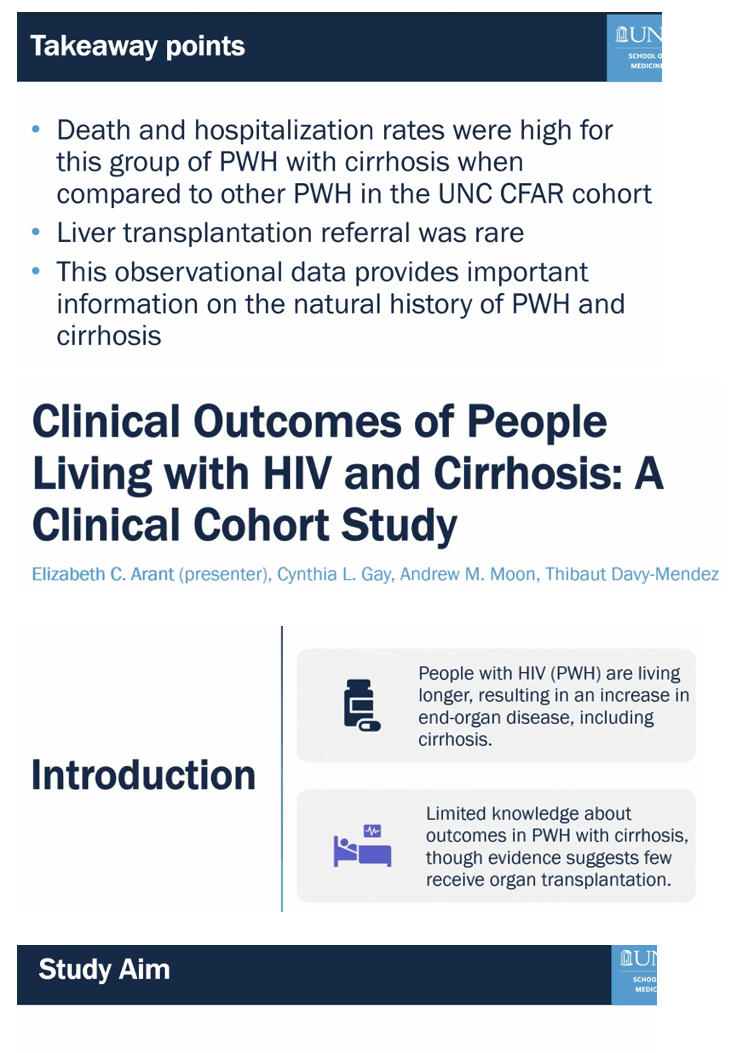
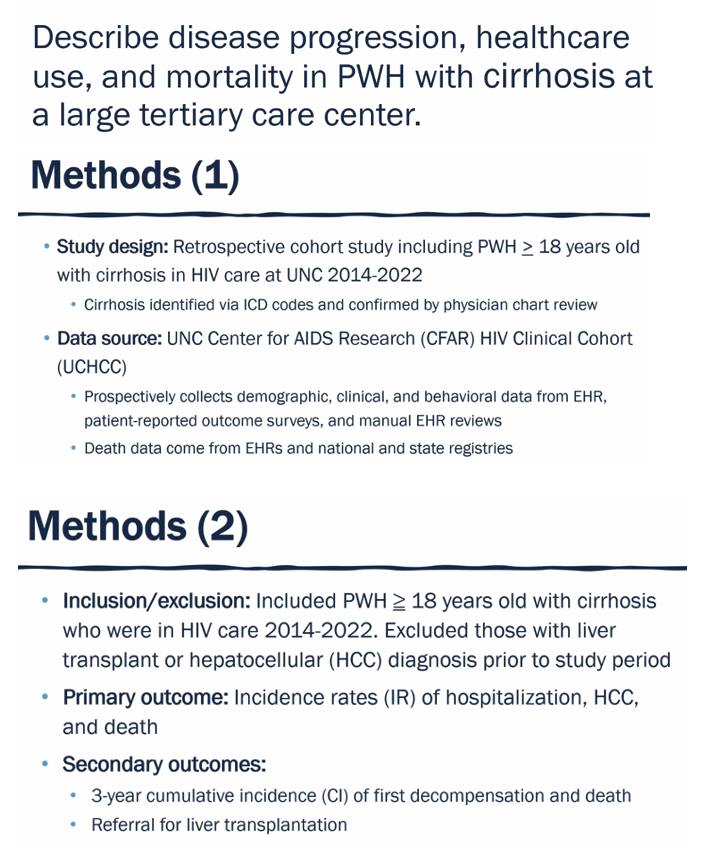
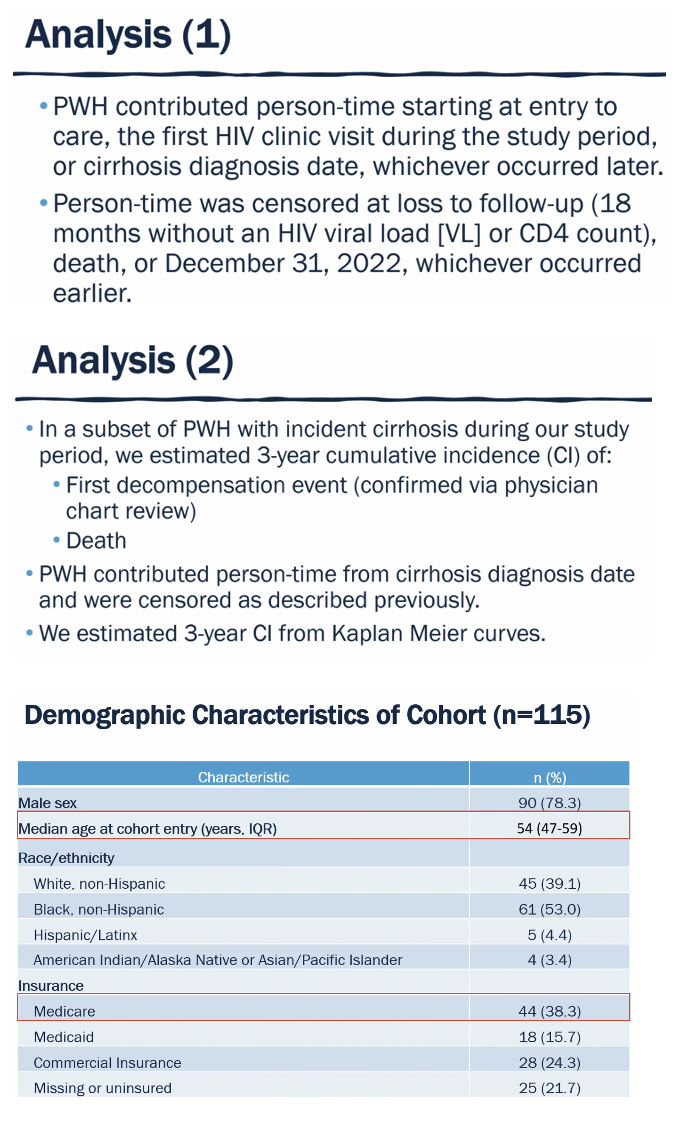
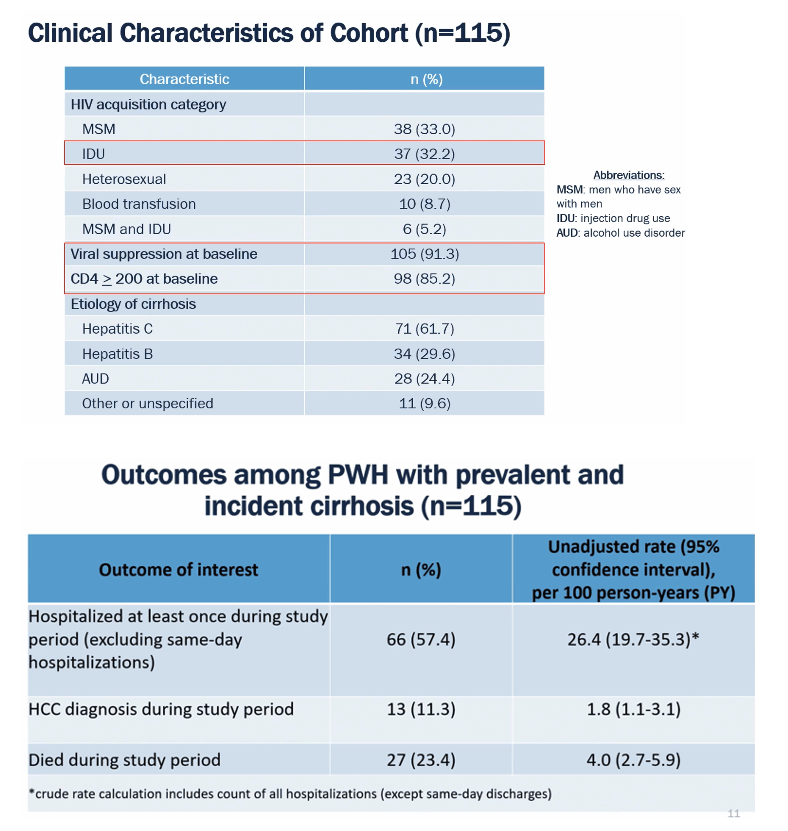
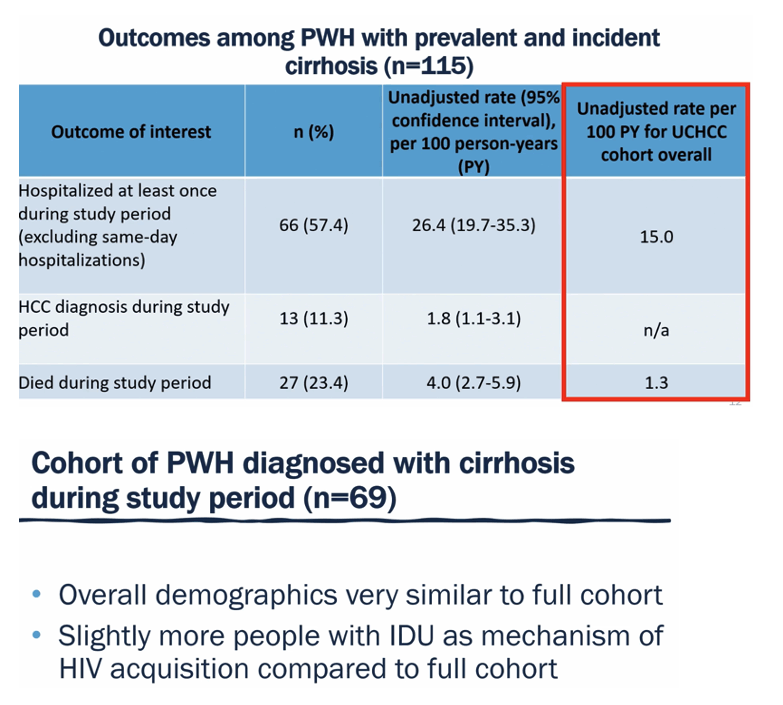
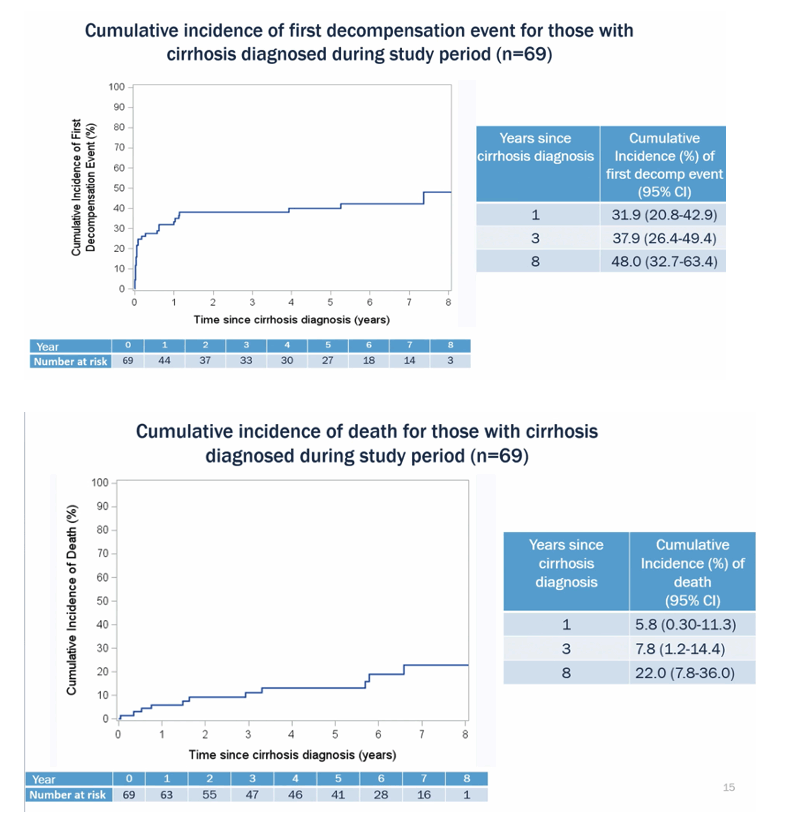
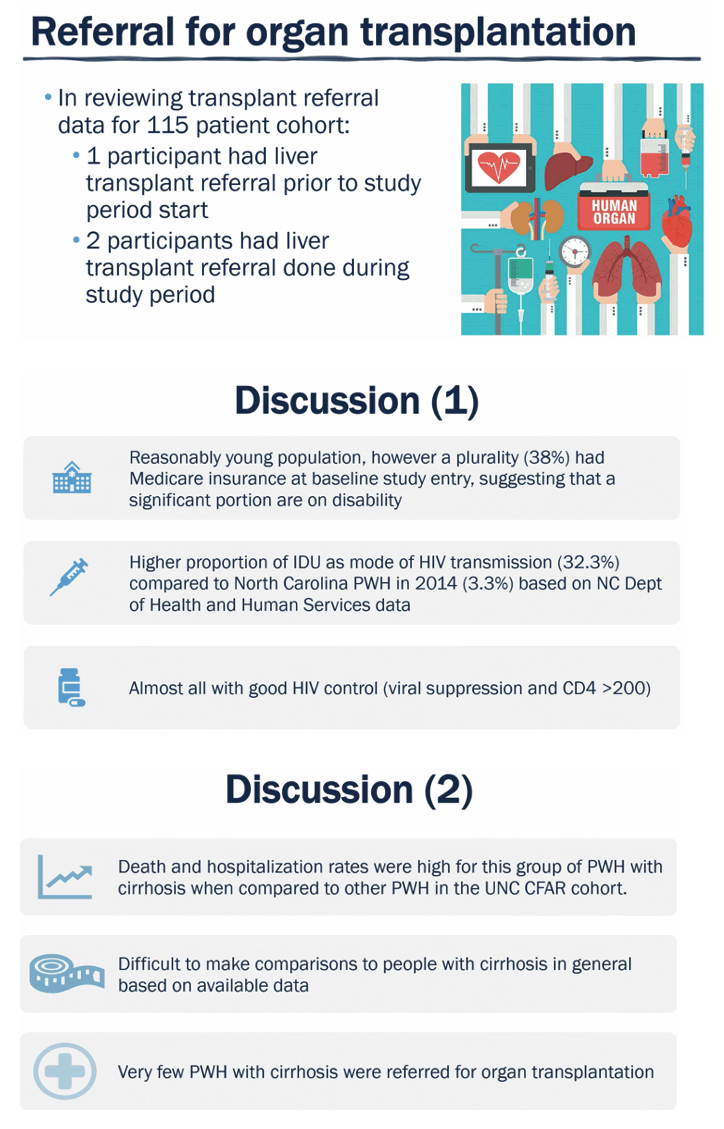
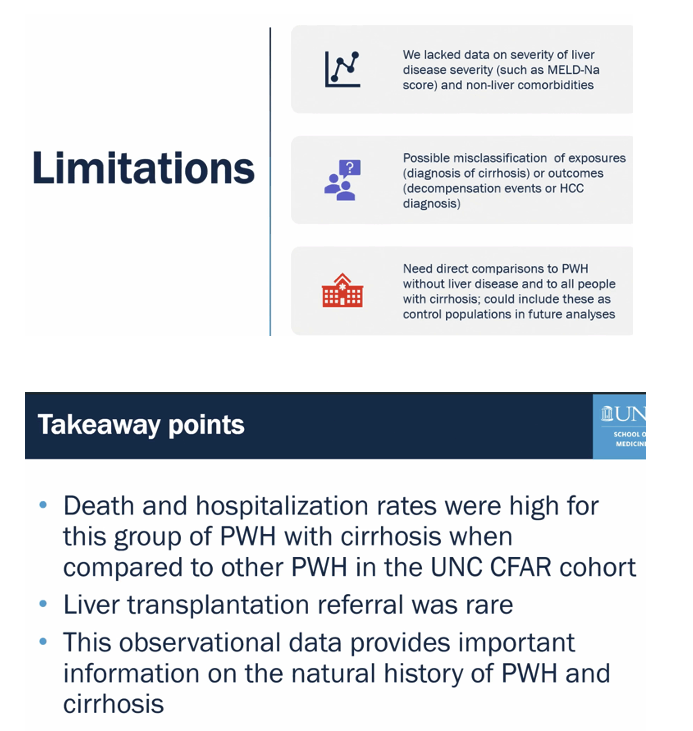
|
| |
|
 |
 |
|
|